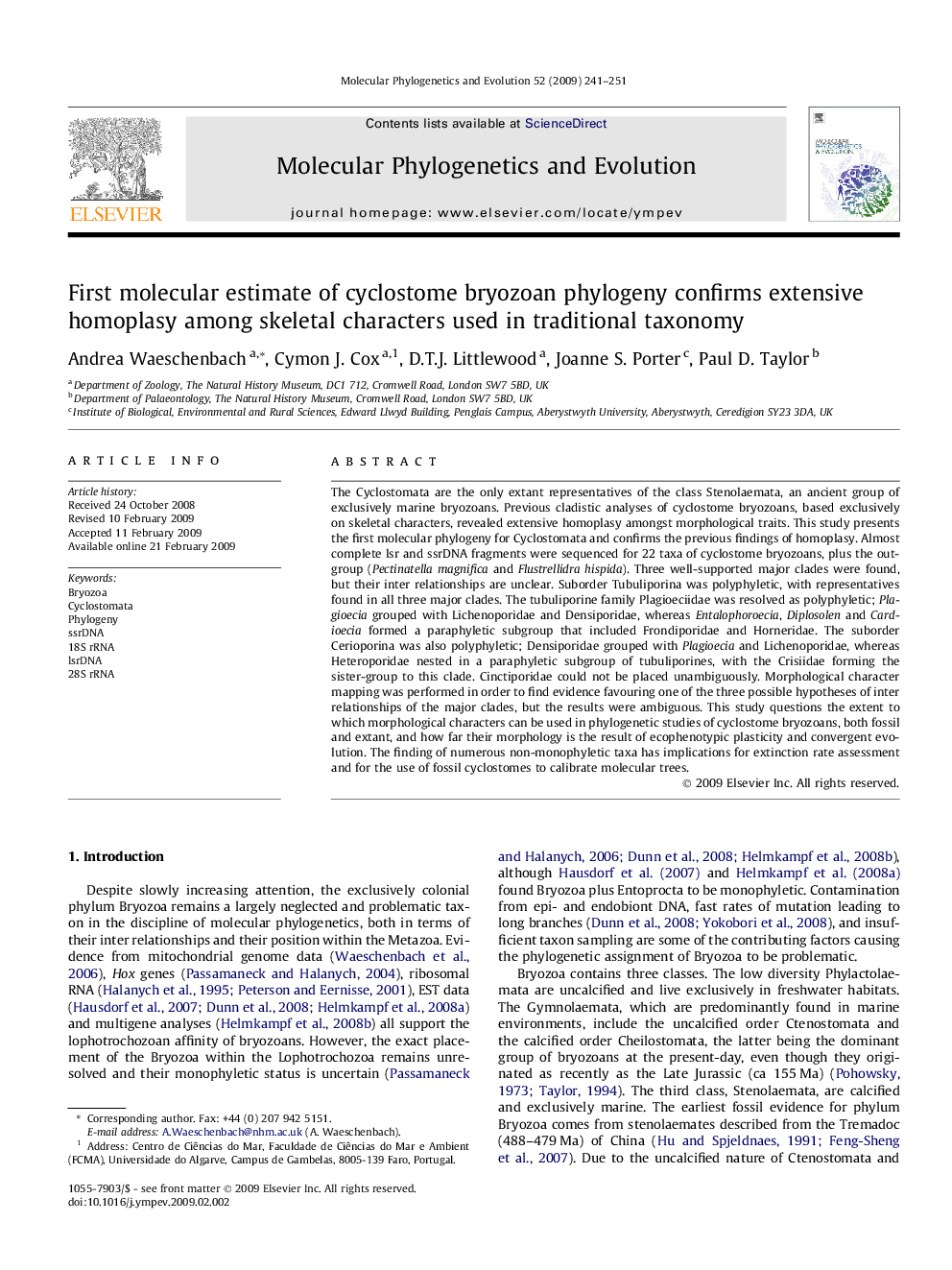| کد مقاله | کد نشریه | سال انتشار | مقاله انگلیسی | نسخه تمام متن |
|---|---|---|---|---|
| 2834918 | 1164326 | 2009 | 11 صفحه PDF | دانلود رایگان |

The Cyclostomata are the only extant representatives of the class Stenolaemata, an ancient group of exclusively marine bryozoans. Previous cladistic analyses of cyclostome bryozoans, based exclusively on skeletal characters, revealed extensive homoplasy amongst morphological traits. This study presents the first molecular phylogeny for Cyclostomata and confirms the previous findings of homoplasy. Almost complete lsr and ssrDNA fragments were sequenced for 22 taxa of cyclostome bryozoans, plus the outgroup (Pectinatella magnifica and Flustrellidra hispida). Three well-supported major clades were found, but their inter relationships are unclear. Suborder Tubuliporina was polyphyletic, with representatives found in all three major clades. The tubuliporine family Plagioeciidae was resolved as polyphyletic; Plagioecia grouped with Lichenoporidae and Densiporidae, whereas Entalophoroecia, Diplosolen and Cardioecia formed a paraphyletic subgroup that included Frondiporidae and Horneridae. The suborder Cerioporina was also polyphyletic; Densiporidae grouped with Plagioecia and Lichenoporidae, whereas Heteroporidae nested in a paraphyletic subgroup of tubuliporines, with the Crisiidae forming the sister-group to this clade. Cinctiporidae could not be placed unambiguously. Morphological character mapping was performed in order to find evidence favouring one of the three possible hypotheses of inter relationships of the major clades, but the results were ambiguous. This study questions the extent to which morphological characters can be used in phylogenetic studies of cyclostome bryozoans, both fossil and extant, and how far their morphology is the result of ecophenotypic plasticity and convergent evolution. The finding of numerous non-monophyletic taxa has implications for extinction rate assessment and for the use of fossil cyclostomes to calibrate molecular trees.
Journal: Molecular Phylogenetics and Evolution - Volume 52, Issue 1, July 2009, Pages 241–251